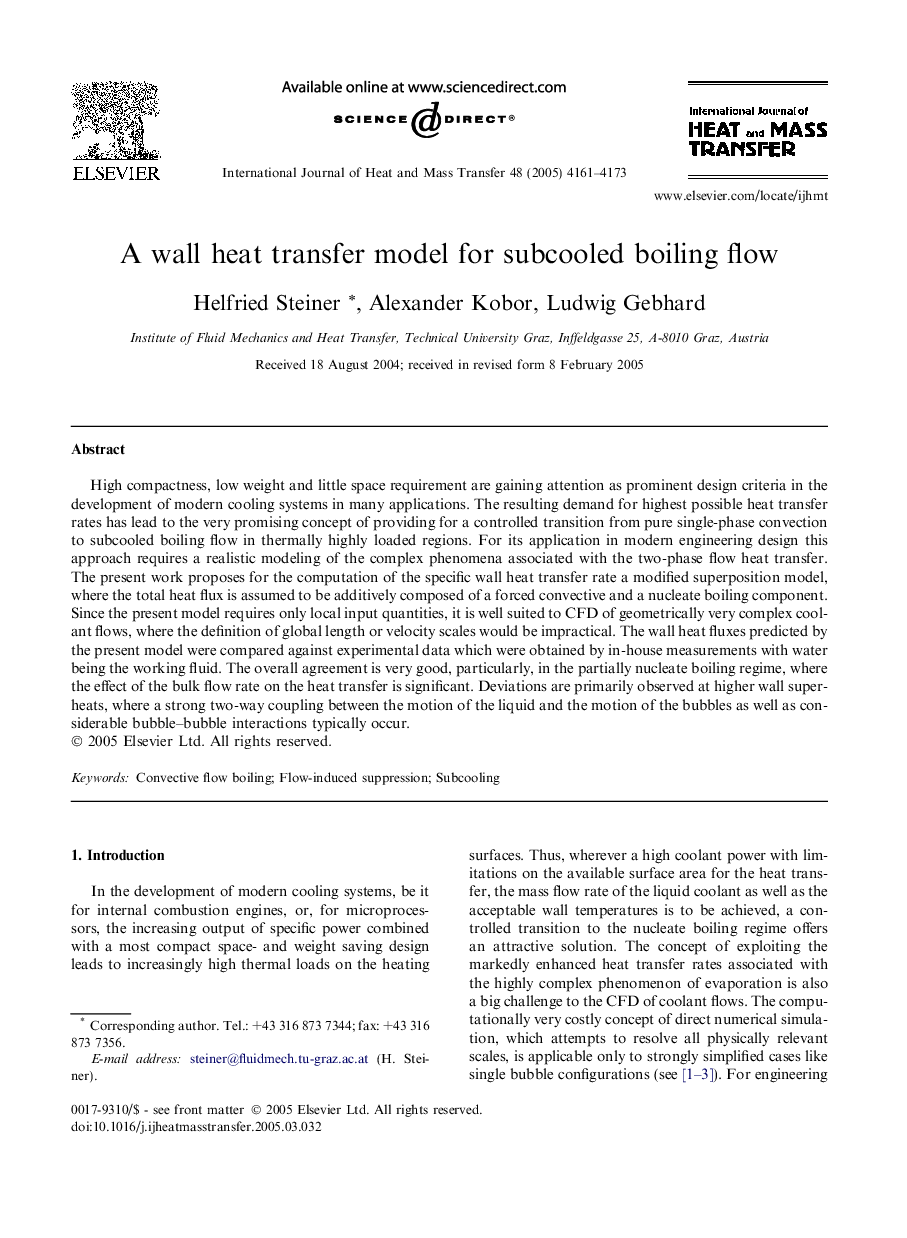| Article ID | Journal | Published Year | Pages | File Type |
|---|---|---|---|---|
| 662948 | International Journal of Heat and Mass Transfer | 2005 | 13 Pages |
High compactness, low weight and little space requirement are gaining attention as prominent design criteria in the development of modern cooling systems in many applications. The resulting demand for highest possible heat transfer rates has lead to the very promising concept of providing for a controlled transition from pure single-phase convection to subcooled boiling flow in thermally highly loaded regions. For its application in modern engineering design this approach requires a realistic modeling of the complex phenomena associated with the two-phase flow heat transfer. The present work proposes for the computation of the specific wall heat transfer rate a modified superposition model, where the total heat flux is assumed to be additively composed of a forced convective and a nucleate boiling component. Since the present model requires only local input quantities, it is well suited to CFD of geometrically very complex coolant flows, where the definition of global length or velocity scales would be impractical. The wall heat fluxes predicted by the present model were compared against experimental data which were obtained by in-house measurements with water being the working fluid. The overall agreement is very good, particularly, in the partially nucleate boiling regime, where the effect of the bulk flow rate on the heat transfer is significant. Deviations are primarily observed at higher wall superheats, where a strong two-way coupling between the motion of the liquid and the motion of the bubbles as well as considerable bubble–bubble interactions typically occur.
